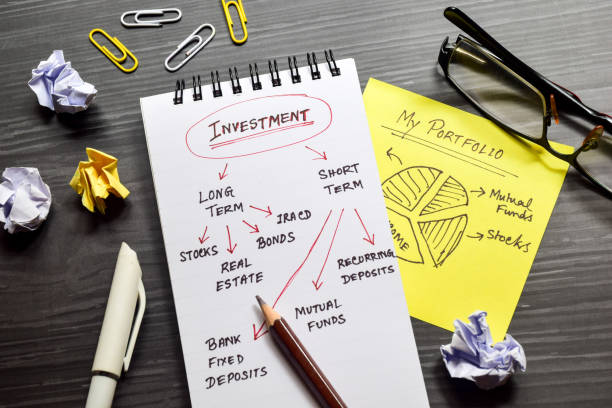A Long-Term Investment Strategy Entails Holding Investments for Further Than a Full Time. This Strategy Includes Holding Means Like Bonds, Stocks, Exchange-Traded Finances (ETFs), Collective Finances, And More. Individuals Who Take a Long-Term Approach Bear Discipline and Tolerance, That Is Because Investors Must Be Suitable to Take on A Certain Quantum of Threat While They Stay for Advanced Prices Down the Road. Investing In Stocks and Holding Them Is One of The Stylish Ways to Grow Wealth Over The Long Term. For Illustration, The S&P 500 Educated Periodic Losses in Only 11 Of The 47 Times From 1975 To 2022, Demonstrating That the Stock Request Generates Returns Much More Frequently Than It Doesn’t.

More Long-Term Returns
The Term share market training Refers to A Specific Order Of Investments. They Have the Same Characteristics and Rates, Similar to Fixed-Income Means (Bonds) Or Equities, Generally Called Stocks. The Stylish Asset Class for You Depends on Several Factors, Including Your Age, Threat Profile and Forbearance, Investment Pretensions, And the Quantum of Capital You Have. But Which Asset Classes Are Stylish for Long-Term Investors? Still, We Find That Stocks Have Generally Outperformed Nearly All Other Asset Classes If We Look at Several Decades of Asset Class Returns. The S&P 500 Returned A Normal of Of11.82 Per Time Between 1928 And 2021. This Compares Positively to The The3.33 Return of Three-Month Treasury Bills (T- Bills) And The 5.11 Return Of 10- Time Treasury Notes. Arising Requests Have Some of The Loftiest Return Capabilities in The Equity Requests, But Also Carry the Loftiest Degree of Threat. This Class Historically Earned High Average Periodic Returns but Short-Term Oscillations Have Impacted Their Performance. For Case, The 10- Time Annualized Return of The MSCI Emerging Markets Index Was2.89 As of April 29, 2022. Small And Large Caps Have Also Delivered Above-Average Returns. For Case, the 10- Time Return for The Russell 2000 Indicator, Which Measures the Performance Of,000 Small Companies, Was 10.15. The Large-Cap Russell 1000 Indicator Had an Average Return of Of13.57 For The Last 10 Times, As Of May 3, 2022. Unsafe Equity Classes Have Historically Delivered More Advanced Returns Than Their Further Conservative Counterparts.
Lift Out Highs and Lows
Stocks Are Considered to Be Long-Term Investments. This Is, In Part, Because It’s Not Unusual for Stocks to Drop 10 To 20 Or Further in Value Over a Shorter Period. Investors Have to Ride Out Some of These Highs and Lows Over A Period Of Numerous Times Or Indeed Decades To Induce A Better Long-Term Return. Looking Back at Stock Request Returns Since The 1920s, Individualities Have Infrequently Lost Plutocrats Investing in the S&P 500 For A 20- Period.7 Indeed Considering Lapses, Similar to The Great Depression, Black Monday, The Tech Bubble, And The Fiscal Extremity, Investors Would Have Endured Earnings Had They Invested In The S&P 500 And Held It Continued For 20 Times.
While Once Results Are No Guarantee of Unborn Returns, It Does Suggest That Long-Term Investing in Stocks Generally Yields Positive Results, If Given Enough Time.
Investors Are Poor Request Timekeepers
Let’s Face It, We Are Not as Calm and Rational As We Claim To Be. One Of The Essential Excrescencies in Investor Geste Is The Tendency to Be Emotional? Numerous Individuals Claim to Be Long-Term Investors Until the Stock Request Begins Falling, Which Is When They Tend to Withdraw Their Plutocrats to Avoid Fresh Losses. Numerous Investors Fail to Remain Invest in online share trading When an Answer Occurs. They tend to Jump Back Only When the Utmost of The Earnings Has Formerly Been Achieved. This type of Buy High, Vend Low Geste

KEY TAKEAWAYS
• Long-Term Investments Nearly Always Outperform the Request When Investors Try and Time Their Effects.
• Emotional Trading Tends to Hinder Investor Returns.
• The S&P 500 Posted Positive Returns for Investors Over the Utmost 20- Time Ages.
• Riding Out Temporary Request Recessions Is Considered a Sign of a Good Investor.
• Rather,Especially,Requests,Drop,Investing,Long-Term,Cuts Down,Costs And Allows,Compound Any Earnings,You Admit From Tips.
Tends To Cripple Investor Returns.
According To Dalbar’s Quantitative Analysis of Investor Behavior Study, The S&P 500 Had an Average Periodic Return of Just Over 6 During The 20- Time Ending Dec. 31, 2019. During The Same Time Frame, The Average Investor Endured an Average Periodic Return of About
There Are Many Reasons Why This Happens.
• Investors Have a Fear of Remorse. People Frequently Fail to Trust Their Judgment and Follow the Hype Rather, Especially When Requests Drop. People Tend to Fall into The Trap of Lament Holding onto Stocks And Losing A Lot Of Further Plutocrats Because They Drop In Value So They End Up Dealing With Them To Assuage That Fear.
• A Sense of Pessimism When Effects Change. Sanguinity Prevails During Request Rallies but The Contrary Is True When Effects Turn Sour. The Request May Witness Oscillations Because Of Short-Term Surprise Shocks, Similar to Those Related to Frugality. But It’s Important to The Flashback That These Dislocations Are Frequently Short-Lived and Effects Will Veritably Probably Turn-Around.
Investors Who Pay Too Important Attention to The Stock Request Tend to Clog Their Chances of Success by Trying To Time The Request Too Constantly. A Simple Long-Term Steal-And-Hold Strategy Would Have Yielded Far Better Results.

